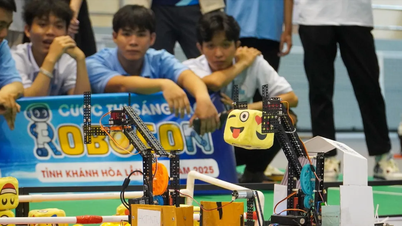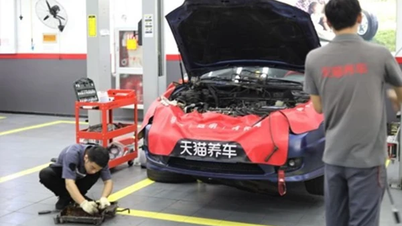 |
| The " ghost term " called " Vegetative electron microscopy " is a phrase that does not exist in science , but has been mentioned in more than 100 academic articles over the past 75 years. (Photo: Thanh Nien Viet) |
 |
| The term originated from a scanning error: in a 1947 French scientific paper, the words “microscope électronique” were mistakenly combined with a section about botany. (Photo: Thanh Nien Viet) |
 |
| When the article was translated into English, this error was retained, leading to the phrase "plant electron microscopy" – which gradually mutated into "plant electron microscope". (Photo: Thanh Nien Viet) |
 |
| Low-quality academic journals (often called predatory journals) have copied this phrase in many studies, contributing to legitimizing its existence. (Photo: Thanh Nien Viet) |
 |
| AI language models like GPT-3, GPT-4o or Claude 3.5 are trained on large data repositories from the internet – which also contain this misleading term. (Photo: Thanh Nien Viet) |
 |
| When asked, these AIs can explain “plant electron microscope” as if it were a real research tool. (Photo: Thanh Nien Viet) |
 |
| This is a typical example of “digital fossils” – errors that exist forever in cyberspace and are repeated as if they were true. (Photo: Thanh Nien Viet) |
 |
| Scientists warn that without vetting input data, AI will continue to amplify such errors, endangering future scientific knowledge. (Photo: Pivot to AI) |
Dear readers, please watch more videos : What is artificial intelligence AI? - Can AI dominate humans?
Source: https://khoahocdoisong.vn/giai-ma-thuat-ngu-ma-ton-tai-75-nam-am-vao-cac-mo-hinh-ai-post269695.html





![[Photo] Prime Minister Pham Minh Chinh chairs a Dialogue with businesses and business associations](https://vphoto.vietnam.vn/thumb/1200x675/vietnam/resource/IMAGE/2025/5/31/b606d6f6ff584fa28af9f353c91bf15d)
![[Photo] Crane falls on container truck and car at traffic construction site](https://vphoto.vietnam.vn/thumb/1200x675/vietnam/resource/IMAGE/2025/5/31/a8d3ae08da324cfe8ee406174c0eacc4)
![[Photo] Emotional and proud flag-raising ceremony and military review on Truong Sa island](https://vphoto.vietnam.vn/thumb/1200x675/vietnam/resource/IMAGE/2025/5/31/9b52525fce6f433083cd0a5bfee59f49)




















































































Comment (0)